
Through witnessing a countless number of programs designed and implemented by individuals interested in creating positive change for children and young adults on the autism spectrum, I’ve seen remarkable advancements in social skills through an active, hands-on/experience-based approach.
This eight-article series provides ideas to advance an inactive, socially craving child/young adult into a physically and socially strong individual through movement and strength. We begin at the gym and through progressive types of training travel off-site, shifting from one-to-one training to team training, to play dates with friends (one example, mind you).
In the previous four training types, social interaction and engagement continue to mature as the environmental climate of training moves in new directions. More and more, our overall experience hinges on our ability to connect, first with one another, and then with those surrounding us. In this type of training, we’re taking things one step further — we share the entire training experience with at least one partner at the gym.
Team Training
What, Where
This type of training takes place in the gym setting. It’s a weekly commitment to complete movement-based objectives inside the gym with at least one training partner.
For our purposes, team training implies one or multiple training partners will accompany the child for the duration of the gym training session.
Similar to ½ One-to-one, ½ Training Partner, the goal remains the same: in a team setting, movement and strength are associated with fun, play, challenge, teamwork, and a positive attitude. Different from the previous type, based on the additional dynamics (new faces and an extension of time), what we can accomplish in the session expands significantly.
Finding A Match
We have lots of options here. No scenario is better than the other and both provide their own set of advantages.
One scenario is beginning this type of training by pairing with the same peer from the previous type of training. This starting place provides familiarity and positive association, which oftentimes grants us an easy-pass to continue where we left off. That being said, there is a chance that you’ll find that once the time is extended between the two or another child is added to the mix, that the session is no longer conducive to meet each child’s needs. This is fine. In this case, go back and forth between ½ One-to-one, ½ Training Partner and Team Training, cycling back and forth between multiple partners.
WATCH: Zoo RunRun — Blaine Crosses the Finish Line in His First 5K
Scenario two is looking for someone new to pair with the child as we transition to working with someone and/or others for a longer duration of time. Allow the searching and testing process to resume. Remember, the training partner may be a friend or sibling, someone who is around the same age or training age — with or without autism. If this is the route that is taken, begin these sessions as team sessions. Therefore, the new team dynamic will be associated with a longer training session accompanied by multiple partners. The shorter sessions (½ One-on-one, ½ Training Partner) will be associated with another social dynamic and a different set of demands.
Social Integration
Identical to ½ One-to-one, ½ Training Partner, Team Training provides an opportunity to further develop self-awareness, training associations, role play, motivation, play dates, and parent camaraderie. Expanding our training time with a partner (or partners) provides a few more benefits that the previous training types would fail to replicate. In no particular order:
Embracing Individualization
A reoccurring theme that constantly needs attention is reshaping associations (mostly negative) that are attached to games, movements, people, equipment, cues, and presentation. What I love about Team Training is the requirement to individualize in order to meet the needs of multiple children. Take, for example, learning to squat in a team setting. Begin by associating the squat as a strength training movement that has multiple parts and everyone will be learning a specific part. Because we all have different weaknesses and strengths, each part will look different to one another. In the grand scheme of things, we’re all learning to squat properly and our concept of squatting will continue to evolve as we gain strength.
Therefore, squats for one child is associated with learning how to sit on a box while maintaining tightness before standing up. Squats for another child may be associated with a broomstick on his back while facing a wall to practice maintaining an upright position while descending and ascending. Wherever the child is, the small progressions should be celebrated so that individuality is embraced and our associations become fluid rather than rigid. Consider how this may be the first time in a child’s life where a customized approach is mandated, accepted, and celebrated.
Transfer of Practice into Play (Part to Whole)
Progressing a child through the previous types of training, much of the attention is focused on parts of a whole. Let’s use basketball as an example. Up to this point, let’s assume we worked on the individual skills that are required for play: dribbling, passing, running, jumping, shooting, rebounding, etc. Assuming the skills have been acquired, now we have a chance to have multiple players to put our practice into play. Chunk the game (rules, offensive/defensive plays, player positioning, advancing the ball, scoring, etc.,) into multiple parts, as you did the individual skills. What may be the best part of transferring practice into play is giving our movement meaningful purpose. We’re losing any form of abstraction and realizing that movement is meant to be purposeful and efficient.
Redefining Competition
Once skills for play are acquired, naturally play turns into a competition. And so, there are winners and there are losers. Within the team dynamic, one child personalizes “winner” differently than the next and this holds true for the word “loser.” In any case, I bet it's safe to say that redefining competition is in the group's best interest.
The training base built thus far will compliment these efforts as you reframe teamwork in a competitive sense. Instilled are the fundamentals of sportsmanship through the previous types of training: the need to attack weak points, an awareness of our self in space, attention to others in a space we're sharing, proof of what can be accomplished when working with others, and the exchange between needing help and giving help. Now as we shift to a competitive mindset, if we win or lose, our accumulated individual actions are analyzed as a team. No longer is loss shameful or negative. Team strategy and personal responsibility are intertwined. You see, the ego is already past arms reach. This approach leaves little room for sulking, taking things personally, and feeling like circumstance is beyond our control. Through a win or loss, the team (through your guidance) reveals a proactive approach to finding solutions to be better as an individual and team. Therefore, as we encounter a similar situation in the future (events leading up to a win or a loss) we can recognize what’s happening and face it, rather than expend unnecessary confusion, anger, or fearfulness.
Exchange Between Dependence and Independence
Associate strength training with the idea of something we can do by ourselves and with the help of others. We’re relying on our self to show up, give maximal effort to each task, and be responsible for every action and response. By training with others, strength training takes on another meaning as we accomplish feats of strength with strategy and teamwork. Finally, we’re placed in situations where it’s appropriate to call for help and lend a hand — all of which has great applicability once our training session ends.
Structure the programming so there is a constant exchange between dependence and independence.
Planning Behind the Schedule
Partner/Team Work
The overall idea is that when the children are together, you’re creating an inviting environment that helps all of the children work as a unit to maneuver in and outside of their comfort zones.
Use this planning period to expand upon previous social experiences and lessons. What can be accomplished now that you’re structuring a plan for partners to perform a set of activities in an extended, predetermined amount of time? Understanding their unique personalities and abilities: How can one feed off of the other to display feats of effort that would otherwise remain dormant? How will you adjust the plan once personalities clash?
A reoccurring concept that should be constant is by giving and receiving help from one another in the gym (through compromise, patience, positivity, respect, manners, teamwork, trust, etc.), together we’re having lots of fun, we’re achieving things we didn’t think were capable, and we’re getting physically and mentally stronger.
As you plan, although our efforts are for the group, continue to answer “what’s in this for me?” as you select your activities. I can’t stress it enough: the children have to see the personal connection in each workout selection and sense your engagement.
Start with Extra Support
I suggest adding a few volunteers (extra eyes, ears, and hands) to help. At least in the first few sessions, while you are grasping the dynamics of the group and gauging the needs of each child (through transition and new activities), extra help can be the difference between a child experiencing something great and a child experiencing something mediocre. The extra help has the power to accelerate learning through a slight change in body position, an extra cue, immediate attention/reinforcement, exercise modification, and activity alternatives (a brain break, etc.)
Remember, it's easier to alleviate support if not needed than it is to add support mid-session when no one else is there.
In the grand scheme of things, if extra support increases the probability the child makes a positive connection between exercise, himself, and another, ADD SUPPORT.
Plan for the Unexpected
The schedule is segmented between a variety of activities, based on the needs of the individual and group. Weakness, interest, fun, and child/parental feedback, are all things that'll guide how time is allocated.
Remain receptive to feedback and always be willing to change the schedule (at a moments notice) based on the needs of the group. Scrap the plan, try something new, repeat a previous lesson, swap implements, extend a teachable moment, accomplish one thing — these are all possible deviations that can be used as substitutes.
Schedule
The schedule is a rough sketch to provide order. I mention that it’s a rough sketch because you should use it as a flexible plan — it’s what you’d like to accomplish in a perfect world but you must also be fully in acceptance of change and disorder. Make it interactive: display so everyone can see it, read and review together, negotiate if appropriate, take turns marking off accomplished tasks, answer/ask questions, etc.
You’re not listing all the social skill opportunities unless not listing them would result in adverse behavior (small cues are acceptable). What is listed (the order, the amount of rest, the types of exercises/activities, the overall time frame, expected wait time, form of transportation, parties involved, game rules, free time, etc.,) is presented to both children in hopes of accomplishing whatever it is you’re looking to accomplish, short and long-term.
To give you something tangible to work with, here is an example of a 60-minute schedule. Obviously, your plan will look much different depending upon the needs of the children and the resources available, but it will at least give you pace, ideas of how to organize a plan, activity ideas, and ways to maximize space. Through the selection, make special note of how the social order will naturally occur. Notes to follow.
60-minute Schedule Outline
5 minutes: Greet and meet/Brief with parents
5 minutes: Active warm-up with cone drills x 3 (slow, slower, natural pace)
- Crawl
- Crawl with knees up
- Lateral shuffle
- Skip
- Jog
- Knee to chest squeeze
- Run
10 minutes: Strength Circuit Upper Body x 2
- Medball partner chest pass
- TRX row
- Medball over head throw and partner catch
5 minutes: Rest/Drink/Snack
10 minutes: Strength Circuit Lower Body x 2
- Hanging leg raise
- Plyobox jump
- Reverse hyper
10 minutes: Game — Bouncy Ball Basket Aim and Throw x 4
10 minutes: Free Time
5 minutes: Goodbye/Brief with parents
Notes
This is a schedule example where multiple children are training together for 60 minutes.
We begin the session with a welcome, parent briefing, and schedule review. This is a great time to get the kids acclimated with one another and allows you to gauge where everyone is today — how to use your extra support, make changes in the schedule, etc.
The warm-up takes us outside or on a clear path of turf. Begin with a 12-foot distance between cones. Extend the distance between the cones progressively if this type of warm-up remains (in future sessions). Model each drill. Each child will move through each drill, taking turns. The first set is performed slowly, the second set is performed at a slower pace, and the third set is performed at a natural pace. This brings special attention to our movement and inhibits any inclination to move fast and sloppy. Guide the children to be aware of order (after he goes, you’re up), readiness, and attention to detail. Again, each movement will be individualized.
The first strength circuit focuses on upper-body work and has the children rotate through three exercises. Two of the three exercises call for partner work (exchange between independence and dependency). I suggest using a timer and set each set for 40 seconds and once 40 seconds pass, switch. If reps are used it can throw off timing (for now). Move through this twice.
The rest, food, and drink is a mid-way point to talk, relax, review the schedule, discuss what was just accomplished, and strategize. Guide conversation as needed.
RELATED: Reintroducing the Jump Rope: The First 6 Weeks
The second strength circuit focuses on lower-body work and has the children rotate through three exercises. Use a timer for each set to keep everything moving smoothly. Move through this twice.
Free time! The choice portion gives the children freedom to choose what they'd like to do for ten minutes. This is a great opportunity to gauge interest (in one another, the environment, and previous activities) and see creativity at play (something you can use for future sessions). If necessary, begin by providing three options and have the children pick one. Keep in mind: the choice doesn't necessarily have to be movement-based and it may be accomplished independently.
Bouncy Ball Basket Aim and Throw. Weird name, eh? Although this game closely resembles basketball, we’re not labeling as so just yet. Therefore, we are minimizing predetermined associations. You’ll thank me later. The ball is bigger and bouncier than a basketball, which may help with control and transfer. One basket (larger target and floor-based) is placed 12 feet away from a chalked line. The goal, move the ball (in any way) from the line to the basket. Earn a point for each successful throw (ball remains in basketball after throw). If a player loses possession in between chalked line and basket, the ball must return to the chalked line to resume play. You may want to begin with one-man teams and then progress to two-man teams. This is where competition, sportsmanship, and teamwork concepts are exercised. Progress rules, implements, labels, and team configurations as necessary.
Close the session with a review of everything we accomplished, things we need to work on, what we can expect for next week, and anything else pertinent to the day’s performance. This is also a great time to give special recognition to small improvements, skill wise and/or socially based.
Transition to Next Training Type
In the next training type, we move from Gym Team Training to Off-site Team Training. This type of training takes place at an off-site location. It’s a weekly commitment to complete movement-based objectives offsite with a training partner or partners. We’ll choose a variety of locations that are movement based that will refine previously learned objectives, social and physical, and introduce new experiences outside of the gym.
Thanks for reading. Please use the comments section below to ask any questions. I’d love to help any way I can.
WHOLE SERIES









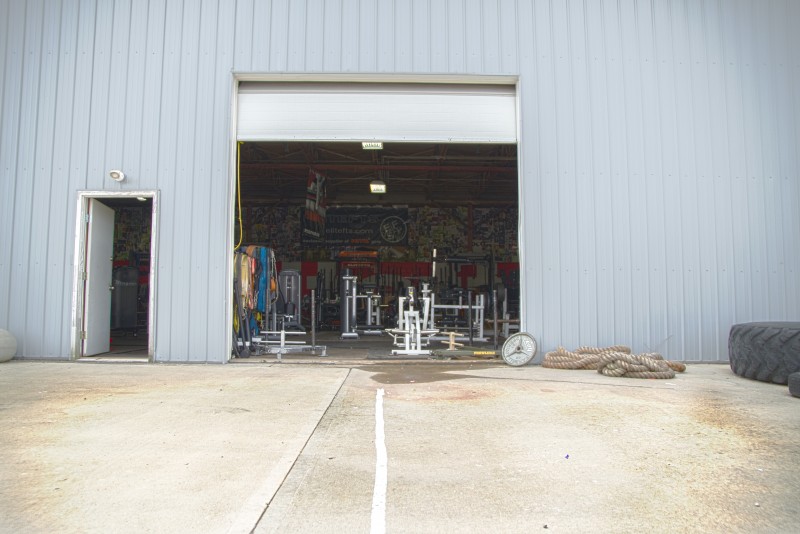
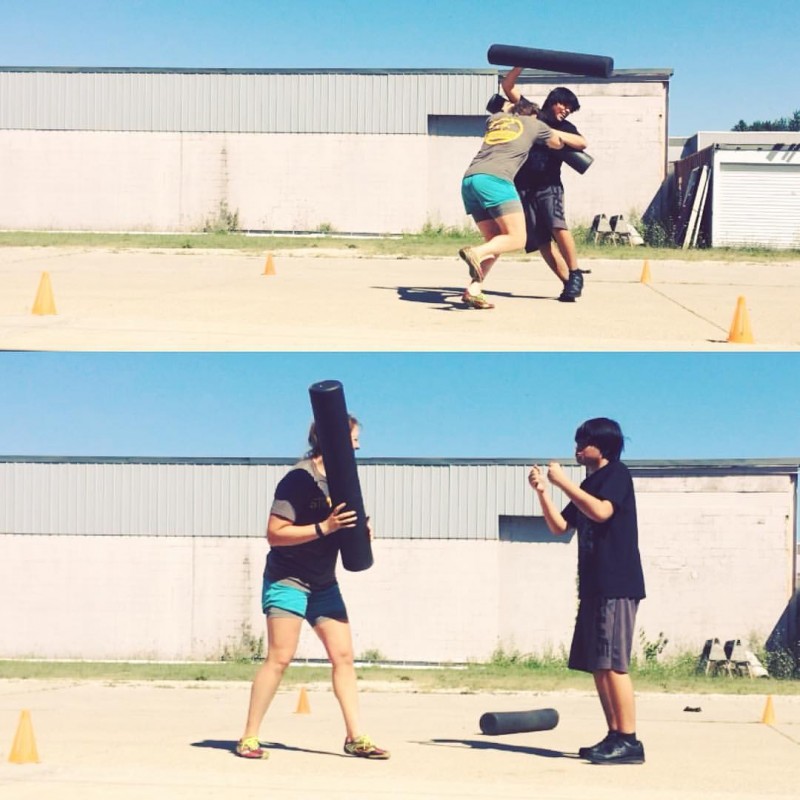
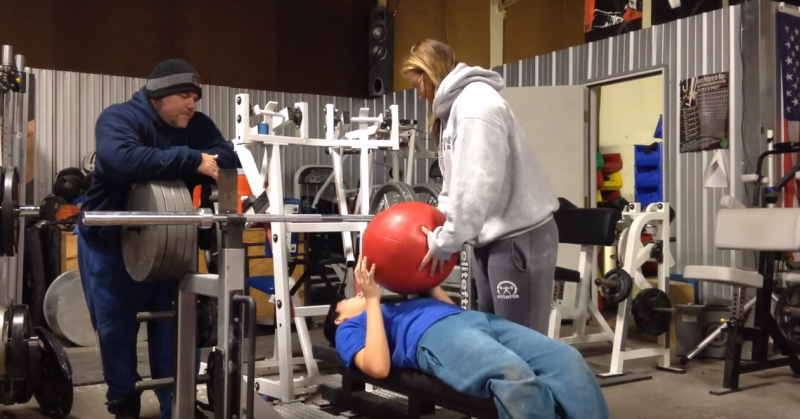
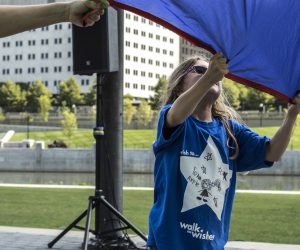
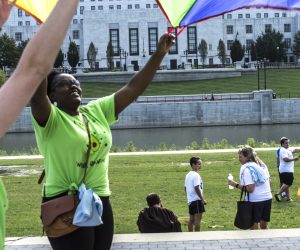

2 Comments